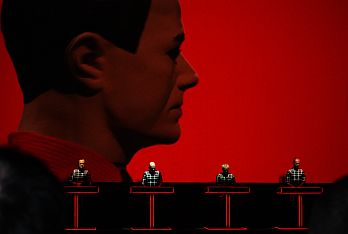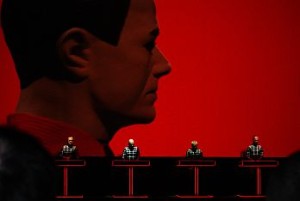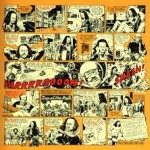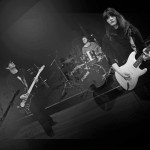Electronically fresh, Iceland Airwaves, only thirteen years young, it seems insane that overzealous folk exclaim this festival to be the best the world has to offer, but they do. Despite having had a curiosity about Airwaves since 2007, I have only now, in 2013, made it to this creative haven. I can now comprehend their meaning.
Travelling to Keflavik Airport from Heathrow alone I was relieved to be sat between two of Emiliana Torrini’s session musicians that were flying over from the UK, with blinded knowledge about the popularity of their artist over in Iceland. That set the tones nicely for this long needed overseas festival, being asked to add one more artist to my schedule.
The next morning I awoke, sensed my bearings in this land of outdoor pools, Northern Lights sightings and Geysirs, and eventually made it to the epicentre of all things Airwaves, the Harpa Concert Hall.
Picking up the wristband was incredibly painless in comparison to other festivals; in fact the whole trip had a veil of ease about it. Mark Steiner and his Problems, a clear reference to Nick Cave, was swiftly followed by a couple of drinks in the Danish bar, and then Harlem where I caught the last track of Gruska Babuska, a seemingly-European Icelander band, in the style of the Matroyshka dolls. It was back to Harpa to catch some monumental Icelanders, including the last breaths of soley, which was long enough to leave me curiously intrigued. Samaris, an ambient trio signed to One Little Indian, took over, via clarinet and synth, drowning the mood with a stench of haunting obscurity, without a doubt the highlight of the evening.
Thursday’s line-up did not overwhelm, which meant a lazy approach was taken, making it in time (after an eager attempt at chasing Aurora Borealis in Thingvellir) to see a taster of Empress Of, avant-garde electronic musician come poet, and then of course headlining New Jersey rockers, Yo La Tengo, which were as you would expect: unpredictably intense. Ira, with a plentiful supply of guitars on stage to pick from (or for him to pick), would be often alternate picking one guitar whilst bending the stings on another.
I made it an early start on the Friday, as I wished to obtain some much desired Kraftwerk tickets, being issued out at noon. Arriving at ten near enough, I thought the prospect of achieving this bleak. However, a space had been kept for me somewhat near the front of the queue in Harpa. Tickets were successfully obtained and I relished in this success by checking out the illustrious, haunting Swedish singer, Sumie Nagano at the Nordic House. Oddly joined in this cultural establishment by several Icelandic children, Sumie seemed somewhat overwhelmed by the audience, unsure of how to please. Short, intimate, and a tad uncomfortable, she performed infallibly.
Taking a quick breather from the festival, I then found myself at Hallgrimskirkja. There was, however, simply no getting away from the music whilst in this city at this time, as the tower bells chimed, kicking the living heart out of me, as I entered the tower, which held truly breath-taking views of the city and Mount Esja.
Casually venturing to find the treasure cove that went by the name, Lucky Records, I could not help but let my eyes curiously scan this city, stimulated by sounds, smells and oblique graffiti. Hosting a showcase of Irish musicians, I was oddly compelled to feel a little more at home in this music geek’s paradise, bumping into Adrian Crowley, whose set I had disappointingly missed.
I inhale Múm’s pop-up exhibition, Dark Side of the Múm, en route back to the Harpa through volatile winds, a short but insightful array of artwork. Arriving in time to see the back side of Dream Central Station’s psychedelic set, we then indulge in Norway’s Electric Eye’s epic 12 Tonar gig, entrancing the crowd before heading into town for some of the off venue gigs.
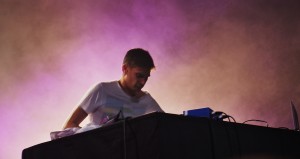
After listening to Múm’s striking performance fuelled with strings, electronic glitch beats and soft vocals in the idyllic Frirkirkjan it was back to Harpa for the acclaimed John Grant. Bella Union’s blunt but well-loved artist, now local in Iceland, was well received by the audience, but having seen him earlier in the year it was a trip to Gamla Bio for me for some Swedish pop, (Mariam the Believer), Irish heartfelt (The Villagers), young Icelandic twee (Sin Fang). This was all before heading back to the Harpa to catch the ominous but aptly titled Gluteus Maximus, musical petrol for the hardcore late night ravers.
Saturday was another late starter. Inspired by harbour meanderings, I opted to venture to Volcano House where Adrian Crowley in his apt surroundings, performed his melancholic folky croon. Leaving early I strolled through the centre to meet a crucial date, a Kira from Munich, to see the ground-braking experimental composer, Kira Kira (naturally), failing to disappoint. I then introduced Kira to Mancunian’s, M O N E Y, who (or at least lead singer Jamie) made an extra special effort to win over an intimate crowd with wine, and surreptitiously anecdotal noise. Midlake hinted at their new style, playing new tracks, not pleasing an audience screaming for Roscoe, whereas Jon Hopkins and once again FM Belfast had the crowd dancing at the end of their puppet strings.
After a well-needed swim in Laugardaslaug, allowing the toxins of the previous eve to dissipate, the Deutsche Kraftwerk entertained, exposing their human aspect, closing the festival, with a set list that would let few fans down. Their 3D visuals, and oddly seated, somewhat intimate setting, excited the crowd, as Autobahn, Tour de France, and Radioactivity reminded them about this band’s significance in electronica. The night could only be closed by a trip to the one of Reykjavik’s coolest bars, Kaffibarinn, where many of the Airwaves crowd had headed to hang onto the remnants of a festival now over. Well, for another year.
Having had a clear presence at several showcases such as North by North West, the Airwaves is transitioning from less of an Icelandic showcase to more of an international music festival on par with likes of Sziget, Roskilde and Exit, unfathomable, considering its youth. The expected juxtaposition of Icelandic strings, synths and discordant vocals has been fused with the scratchy guitar riff, snare and it certainly benefits from this diversity. It’s safe to say that I will be back in Reykjavik for this festival in 2014, joining those that justifiably rave about it.

